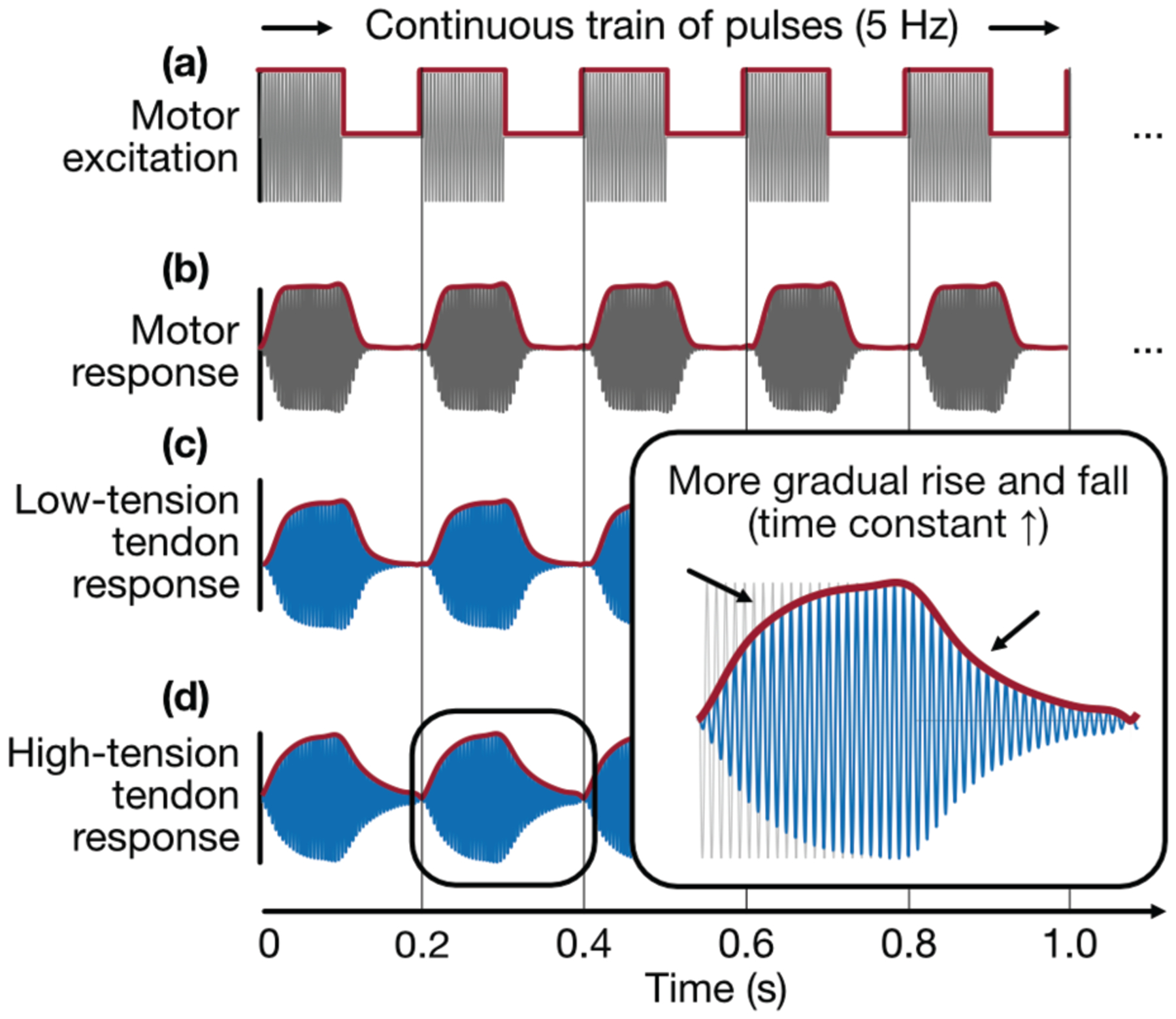Fig 2.

Vibration input and response, (a) A vibration motor is excited by a continuous train of bursts (230-Hz sine multiplied with 5-Hz square), (b) The motor exhibits its own (constant) rise and fall time due to internal stiffness and damping, (c) A tendon under low tension responds to burst vibration with a steeper rising and falling edge (faster energy absorption and dissipation), (d) A tendon under high tension responds to burst vibration with a more gradual rising and falling edge (slower energy absorption and dissipation).
